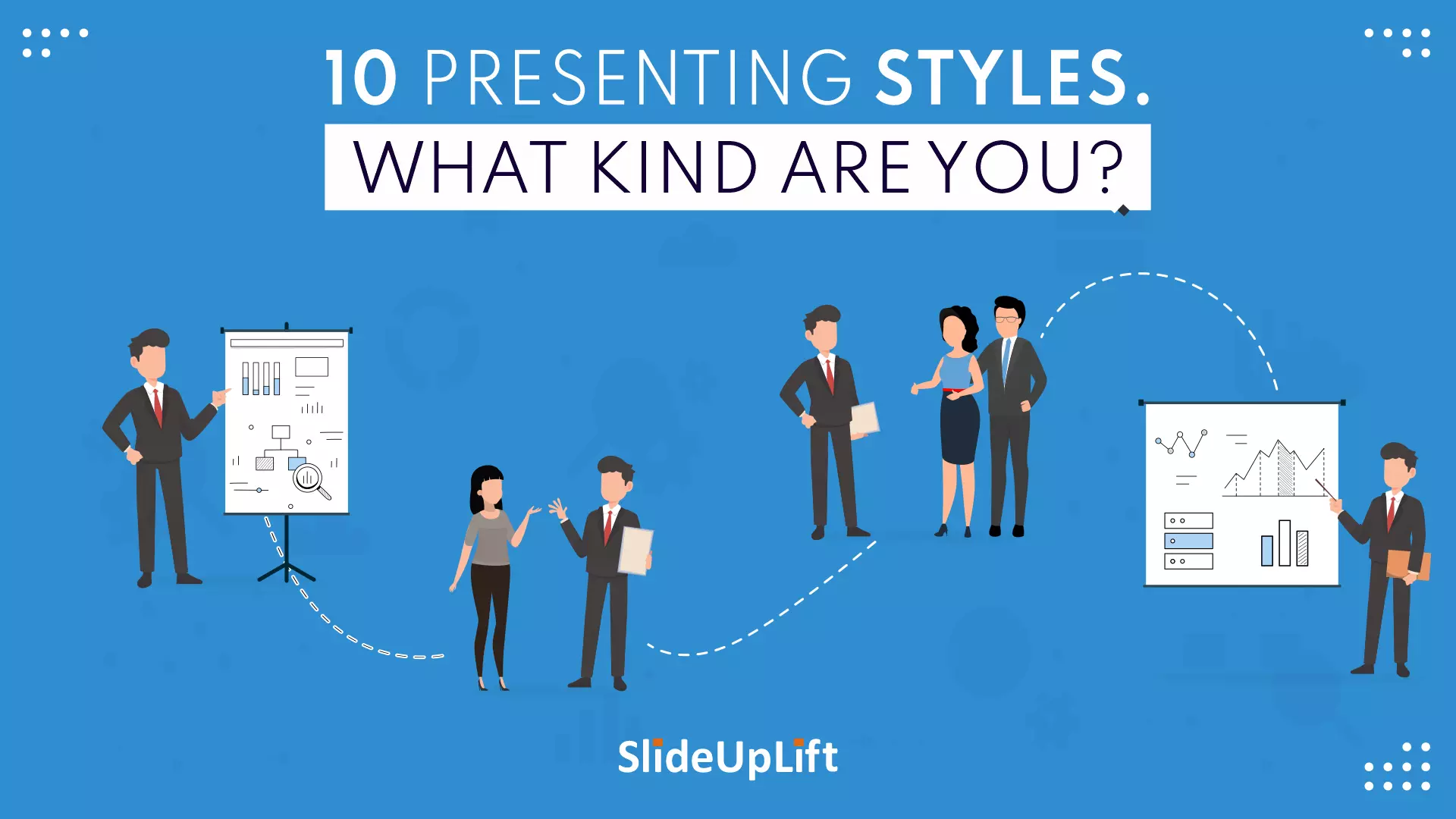Storytelling Tips to Change the Way You Present Ideas
A piece of oft-given advice surrounding making presentations is that in order to engage an audience, your presentation and speech need to have a narrative. And we wholeheartedly agree with this advice: your presentation needs a clearly defined narrative: a storyline carrying a beginning, a middle, and an ending. Audiences want to follow along with the larger narrative of your presentation, to comprehend, engage and participate in the presentation effectively.
SlideUpLift’s slide and deck designs, leverage these ideas heavily. In this blog, we wanted to share many of the insights we learned while doing the work, and based on the feedback we received from SlideUpLift users.
In this blog, you will learn
What is Storytelling?
Storytelling is a tradition as old as human civilization. Human beings love stories, be it listening or telling them. It is, therefore, a process in which we retell what has happened or create a picture for someone else to communicate our ideas and creativity. Storytelling is the way we make sense of the world, and use all kinds of linguistic and narrative devices to make it compelling and interesting for everyone.
In theory, storytelling is the process of telling a narrative, one with a plot, characters, and a larger theme. It can be theatrical or understated, depending on the situation.
In business communication, the same principles of storytelling apply. The story should have something of interest to the listener. The plot of a presentation is an expression of the idea that it wants to convey. It could be something as fact-based and data-heavy as a Quarterly Business Review, or something more aspirational and emotional such as a sales pitch. In both instances, incorporating storytelling elements makes the communication far more effective, and the plot easier to follow. Moreover, the presenter, stakeholders, and even the audience become active characters within the larger narrative of the presentation, creating indirect vested interests in the larger theme, which becomes the very idea or communication you intend to present.
Why is Storytelling Important in Business Communications?
There are many reasons why storytelling is so important in business communications, specifically presentations. Building from the larger tradition of storytelling, presentations can effectively incorporate ideas and elements to build an emotional connection to the audience.
In a 2016 TED Talk, researcher Uri Hasson even suggested that storytelling, and good stories, can align the brain activity of two separate individuals to function in a similar capacity in terms of a reaction, both mental and physical, to the story. A real-world example of this would be the experience of going to the movie theatre, where the entire audience is being shown the same story, and everyone follows along similarly i.e. laughing at funny bits or gasping at jumpscares during horror movies. A good story brings people together in alignment with their responses and makes them more amenable to understanding your point of view.
Therefore, having storytelling imbibed in the very creation of your presentation can align the audience’s expectations to your own ideas, and make your communication far more successful. Storytelling in business communications can make your message memorable, emotional, interesting, relatable, and persuasive, all aspects that are necessary for a successful presentation.
How Are Storytelling Elements Incorporated in Presentations?
There are 6 major elements when it comes to incorporating storytelling elements in your presentations. Each of these manifests in different ways when it comes to creating your presentations, and working out your speech or talking points along with them.
Purpose
Seemingly obvious and yet often missing from presentations, your presentation needs to have a clear and defined purpose. Every great story has a larger purpose it is trying to fulfill, without which it simply becomes a collection of abstract thoughts and errant ideas.
Your presentation needs to have a clear vision in terms of what it intends to communicate. Moreover, it needs to set the context for the problems that you intend to address. A good way to define the purpose is by understanding your audience and actively finding common grounds with which you can create your presentation. This makes the problems, narratives, analogies, and solutions all aligned to the specific issues and desires of your audience, and ensures that everyone is working with the same purpose in mind.
Source: Vision Template by SlideUplift
Emotions
Stories have the power to form an emotional connection between the storyteller and the listener. Using the power of storytelling, form an emotional connection with your audience. They should trust you, and trust in the things you are telling them.
Use analogies and incorporate those in your presentation as well. Evoke memories, feelings, and a desire for action within your audience. Moreover, build confidence in your words so you can finally present a call-for-action that would elicit an emotive response from your audience in line with your expectations.
Source: Conclusion Slide by SlideUplift
Check out the vast library of Conclusion Slides.
The Problem, and the Solutions
Your presentations should effectively be solving a problem that has been so far unacknowledged. It can be the problem of effective communication within internal departments of an organization, or a larger problem you’re trying to solve as an entrepreneur using your products, which then is explained using presentations. A good business story narrates the problems (business need), the people (heroism), the weapons (tools), and the tactics (process) and takes the audience on the journey along the way.
A good way to involve the audience and make it a two-way communication is by making solutions that involve the active participation of the audience. It makes them important characters within this larger narrative with a clear role to play to solve a problem, one that is clearly affecting them.
Source: Problem Solving Template by SlideUplift
Clear Narrative
Having a clear narrative is key. This is more of a functional aspect of your presentation, in that each slide and your talking points should be cohesive, sequential, engaging, and focused. If you do not have a larger narrative in mind, it’s worth spending some time first outlining your presentation and working out the order of the slides to optimize the flow of information. Presentations with clear narratives have specific directions they’re working in and a larger vision to adhere to.
Source: Minto Pyramid Template by SlideUplift
Check out more collections of Minto Pyramid Templates.
Element of Surprise
The best of stories can get monotonous if nothing interesting ever happens in them. And despite your best efforts, the same can happen with presentations. To keep the audience interested and alert, having an element of surprise in your presentation is necessary. This can mean suddenly showing impressive statistics, having a false start (starting with a different story that segues into the main point of the presentation), or surprising analogies. These are all ways in which you can keep the audience on their toes and hanging on to your words to know more.
Source: Conclusion Slide by SlideUplift
Simplicity
Lastly, the most effective storytelling element is simplicity. The audience does not want mind riddles to grasp your message. Nor do you need to do mental gymnastics to sounds smarter. Everyone in the audience needs to be on the same page for your presentation to be considered successful. Thus, keep it simple, and make your meaning clear with direct quotes, clear statistics, and impactful call-to-actions.
SlideUpLift’s Presentations Guided by the Concept of Storytelling
SlideUpLift understands the power and impact of good storytelling. We incorporate elements of visual science and storytelling in every single presentation template in our vast collection to ensure that regardless of the theme of the presentation, it can communicate your ideas effectively and creatively.
By utilizing content, infographics, and visual elements intended to tell a story, we create presentation templates that capture the audience’s attention and allow presenters to feel confident in their work and words. Every template is fully editable and can incorporate an individual’s unique brand of storytelling as well, creating the perfect presentation that has proven elements of storytelling and the presenter’s personality reflected in the final product. Know about the three checks of an effective PowerPoint presentation by reading our blog.
Source: Employee Values Templates by SlideUpLift
Source: Animated Business Goals by SlideUpLift
Browse through our collection of Animated Powerpoint Templates.
Conclusion
Understanding how storytelling works in business communication is one of the most important skills in terms of business communication today. And using professional presentation templates with storytelling elements and great visual design is the best way to communicate your ideas and present your thoughts in a highly engaging manner. After all, relying on the human tradition of storytelling is one of the most fundamental ways in which we can communicate as a group and make our voices heard and our creativity shine.
Now you don’t have to scour the web to find out the right templates. Download our PowerPoint Templates from within PowerPoint. See how?





















